Project Risk Management Report: Project Lifecycle Shortcomings
VerifiedAdded on 2021/06/18
|5
|950
|23
Report
AI Summary
This report provides an analysis of project risk management, focusing on the shortcomings within the project management process that can lead to significant project risks. The report examines the project lifecycle, including conceptualization, planning, execution, and termination stages, highlighting how risks can arise at each phase. It reviews literature that identifies various sources of risk, such as uncertainties in performance, quality, and reliability, as well as complexities related to time, communication, and cost. The report further explores how the project life cycle helps in identifying these risk sources and the importance of proper planning, setting milestones, and coordination to mitigate these risks. The conclusion emphasizes the need for effective project management practices, including the implementation of objectives, to reduce uncertainties and enhance project outcomes. The report leverages academic sources to support its analysis and provides a comprehensive overview of project risk management strategies.
1 out of 5
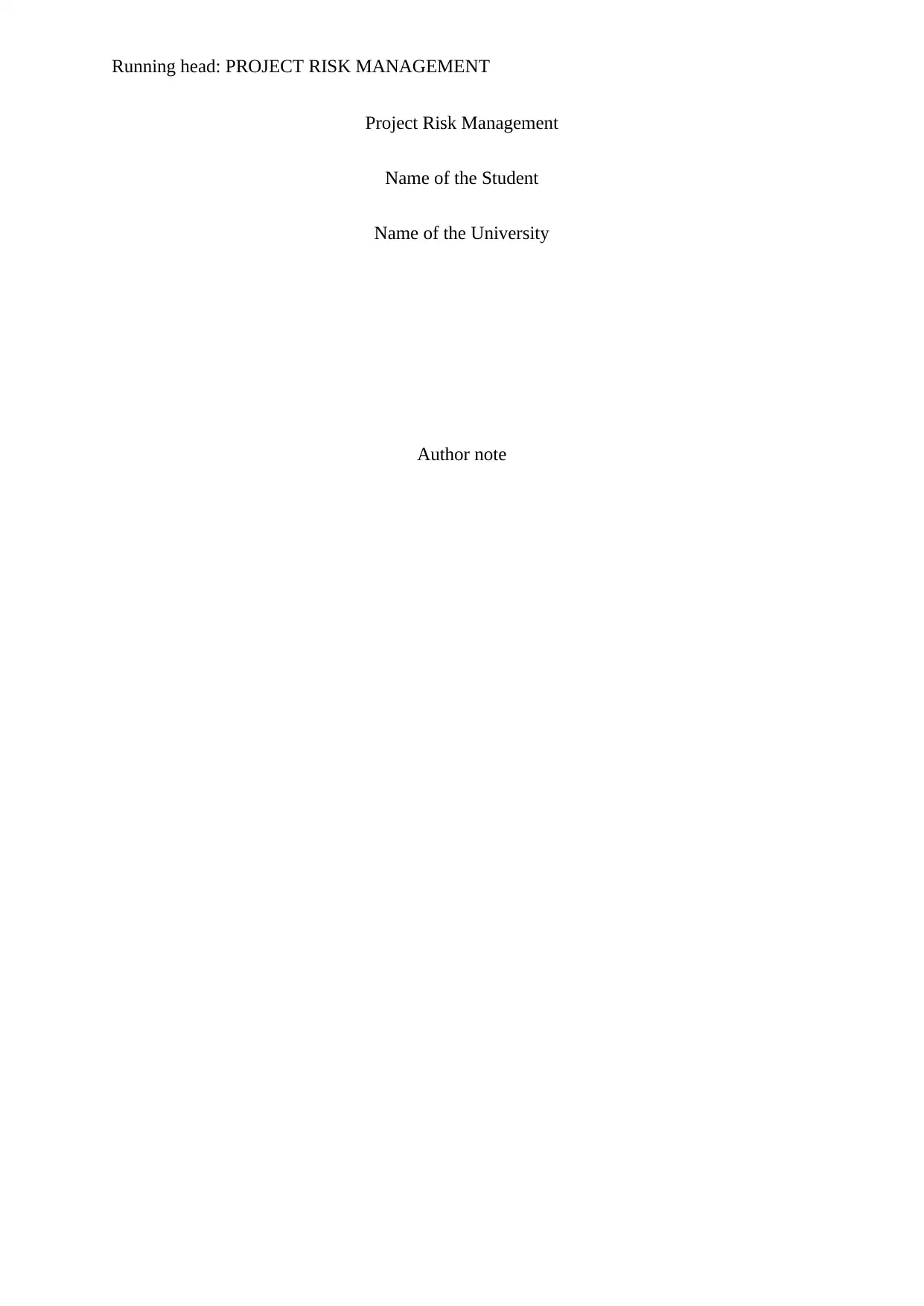
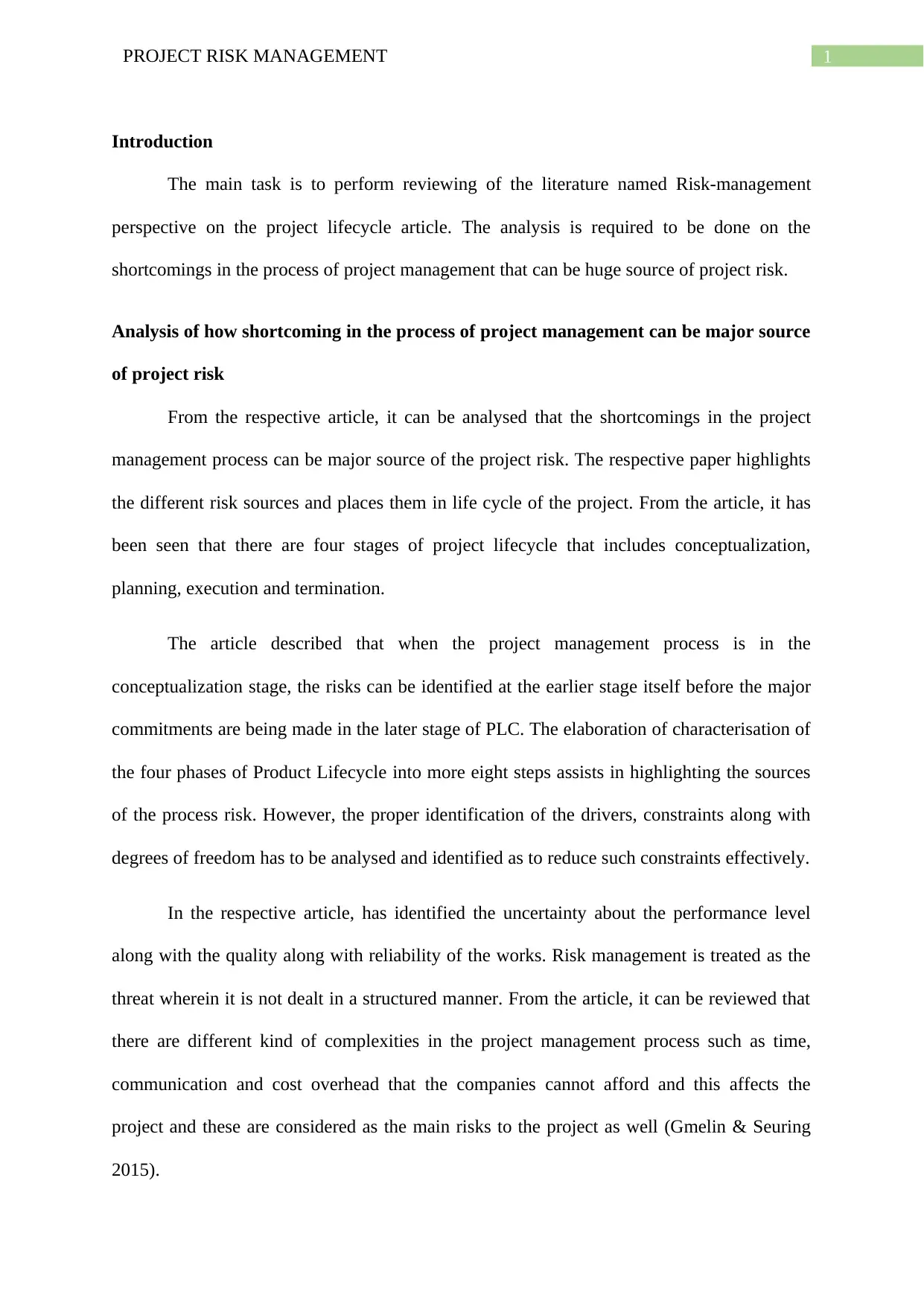
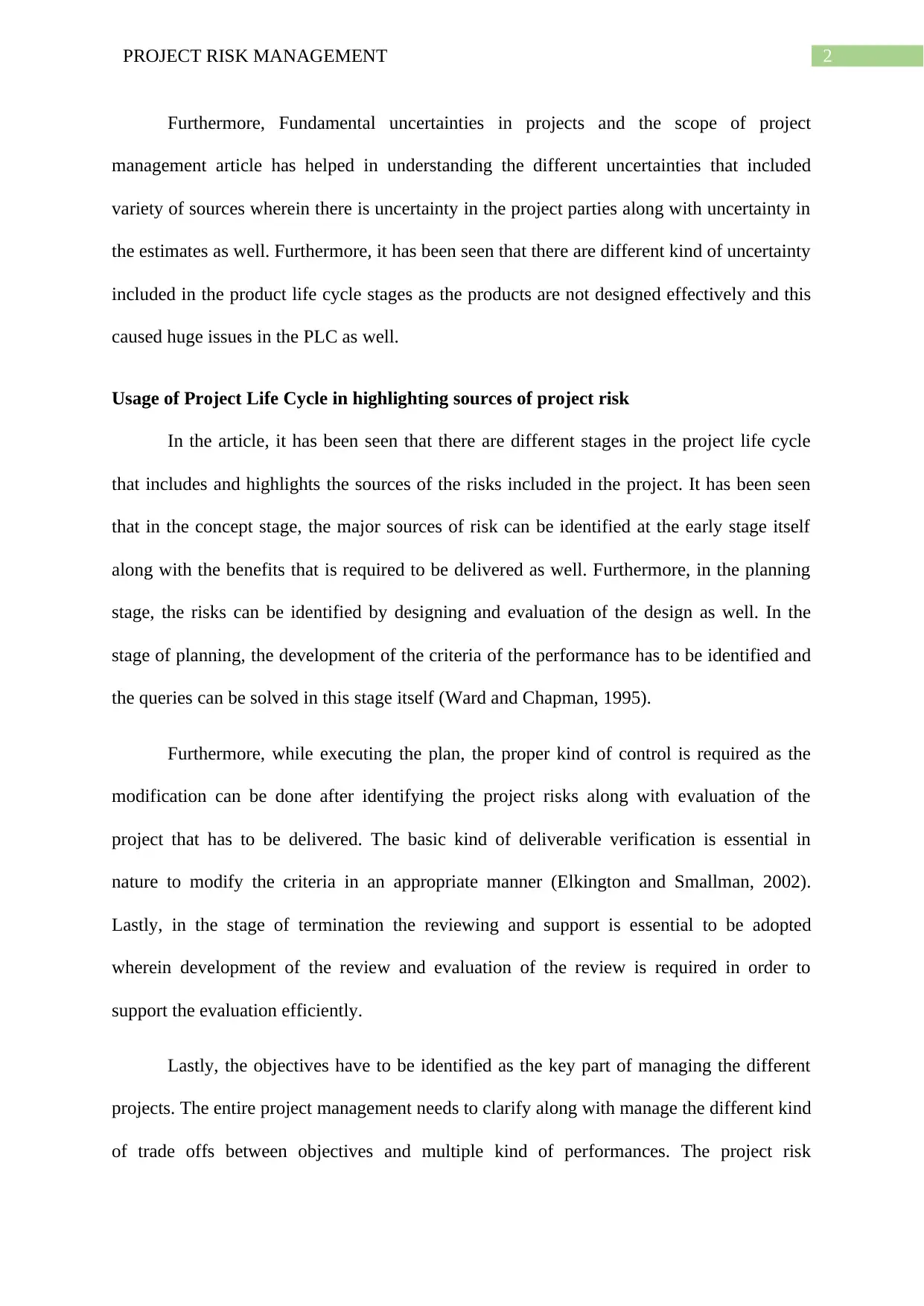

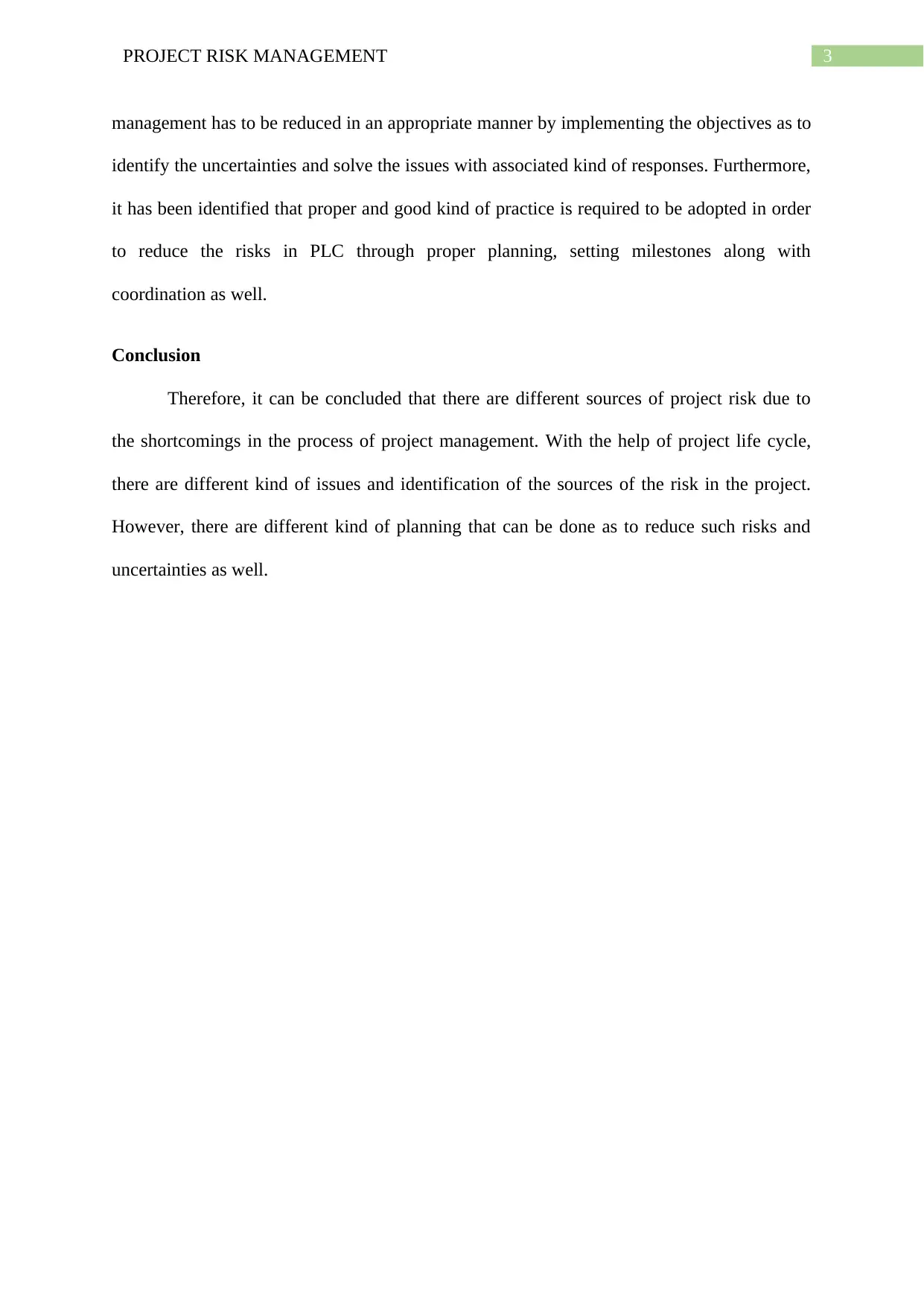
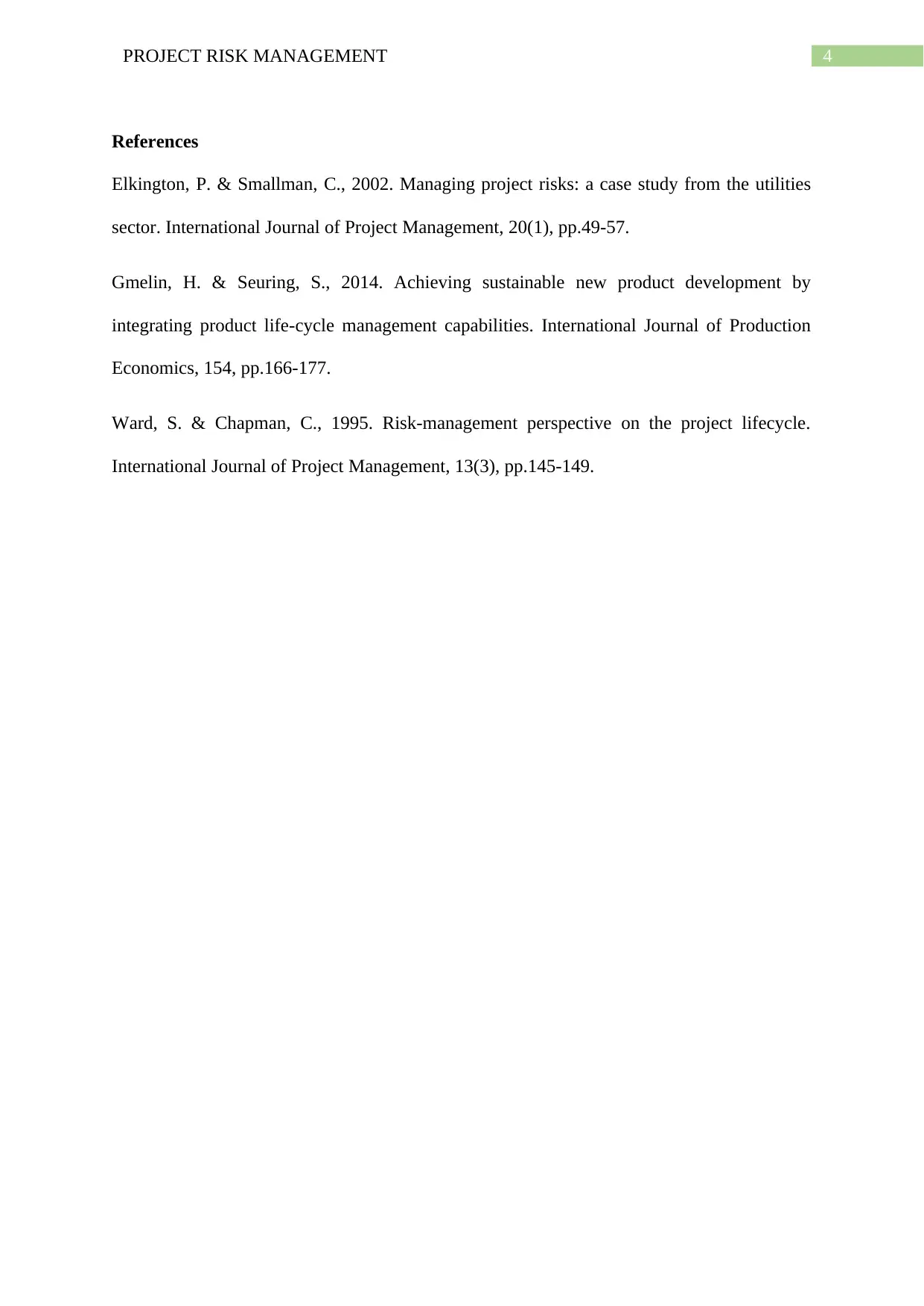





![[object Object]](/_next/static/media/star-bottom.7253800d.svg)